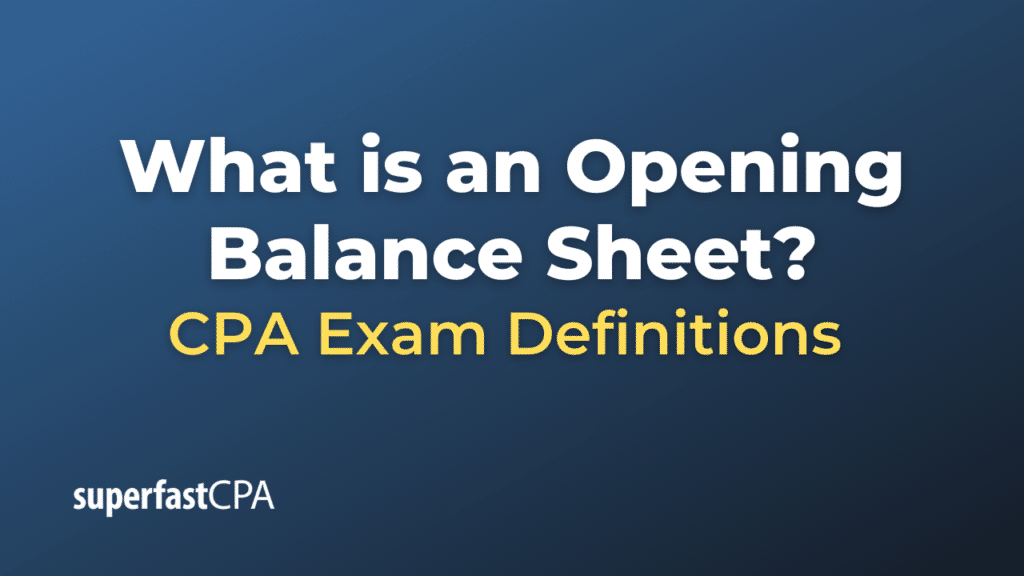Opening Balance Sheet
An opening balance sheet is the financial statement of a business at the start of a new accounting period. It includes the balances of assets, liabilities, and equity from the end of the previous accounting period, which then become the opening balances for the new period.
If a company is newly established, the opening balance sheet would include the initial capital contributed by the owners or shareholders, as well as any initial assets and liabilities of the company. For an existing company, the opening balance sheet for the current period would be identical to the closing balance sheet of the previous period.
The opening balance sheet is important because it serves as a “snapshot” of a company’s financial position at the start of a period. It provides the starting point from which the company can track its financial performance, measure changes in assets and liabilities, and assess its overall financial health.
Components of a typical balance sheet include:
- Assets: Anything of value that a company owns, including cash, accounts receivable, inventory, property, plant, and equipment.
- Liabilities: What a company owes, such as loans, accounts payable, wages payable, and any other debt.
- Equity: The net value of the company (assets minus liabilities), including capital stock, retained earnings, and other equity accounts.
All of these elements must balance according to the fundamental accounting equation: Assets = Liabilities + Equity.
Example of an Opening Balance Sheet
Let’s imagine we have a new company, ABC Startup. The owners have invested $200,000 in exchange for shares in the company, and they’ve also secured a loan from the bank for another $100,000. They’ve used part of this money to lease an office and to purchase office equipment, such as computers and furniture.
Here’s how ABC Startup’s opening balance sheet might look:
Assets
- Cash: $250,000
- Office Equipment: $50,000
- Total Assets: $300,000
Liabilities
- Bank Loan: $100,000
- Total Liabilities: $100,000
Equity
- Owners’ Equity: $200,000
- Total Equity: $200,000
The total assets ($300,000) equal the total of liabilities and equity ($100,000 + $200,000). This balance sheet provides a snapshot of the company’s financial position at the very beginning of its operation.
Going forward, ABC Startup would update its balance sheet regularly (typically at the end of every month, quarter, or year). The closing balance sheet at the end of one period would become the opening balance sheet for the next period. Each balance sheet would reflect the changes in the company’s assets, liabilities, and equity over the period.













